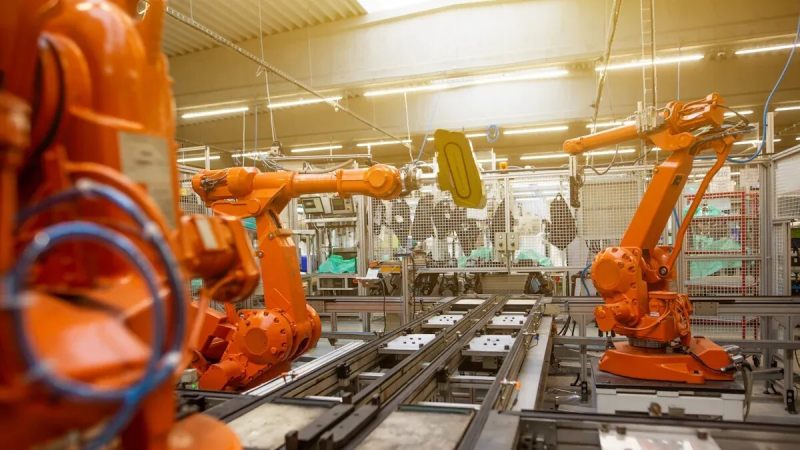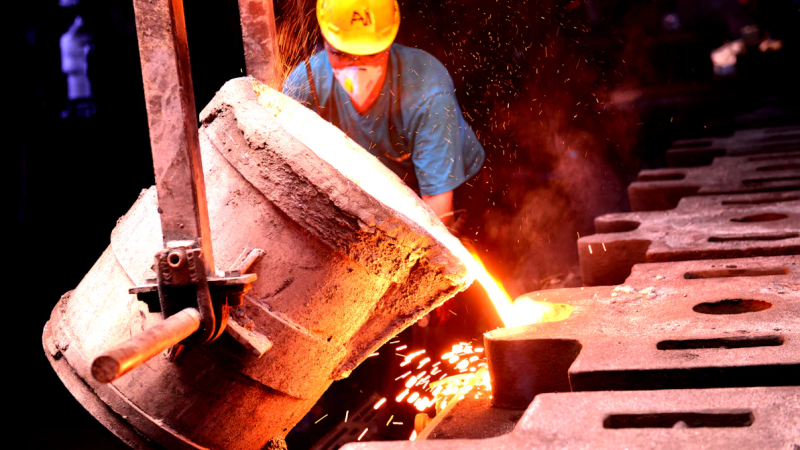

You want metalworking and assembly to be faster and more exact, and the induction heater application is a great solution for this. Induction heaters, such as Canroon solutions, heat things quickly and use energy efficiently, achieving up to 90% energy efficiency. They also complete jobs much faster than traditional methods. This results in fewer mistakes, less waste, and more finished products, as induction heaters only heat the part you need.
In automotive, the induction heater application allows you to make gears harder so they last longer.
In medical device manufacturing, it provides strong and clean joints.
In petrochemicals, you can control temperatures very effectively.
Key Takeaways
Induction heaters make metalworking faster and more efficient. They can save up to 90% of energy. They also cut job times by half or more.
This technology heats metal very accurately. It helps lower mistakes and waste. This means finished products are better.
Induction heating can be used in many industries. It is used in cars, medical devices, and petrochemicals. It helps with brazing, hardening, and putting things together.
Induction heating makes work safer. It does not use open flames. This lowers the chance of burns. It also keeps the workspace cleaner.
Using induction heating in factories can save a lot of money. It is better for the environment. It uses less energy and makes less waste.
How Induction Heating Works

Electromagnetic Process
Induction heating uses electromagnetic fields to heat metal. When you put a metal part in an induction coil, the coil makes a changing magnetic field. This field causes eddy currents to move inside the metal. The metal resists these currents. That resistance changes the electricity into heat. The metal gets hot fast and evenly. You can control the heat very well. This is important for many induction heater application needs. You can heat only the area you want. This is good for hardening, melting, or joining metals.
Key Components
Every induction heater application needs a few main parts. Here is a simple table that shows what each part does:
All these parts must work together for the system to be safe and efficient. The power supply gives energy. The coil makes the magnetic field. The cooling system keeps everything at the right temperature.
Manufacturing Integration
Many modern factories use induction heating. This technology fits into different steps of making things. In jewelry making, you can melt metals with high accuracy. The temperature stays within one degree Celsius. In foundries, you get clean melting with less hydrogen. This is important for safe car parts. In aerospace forging, you heat parts like turbine blades evenly. This helps them last longer. Automotive forging uses this to heat only certain areas. This reduces distortion and makes things more exact. Surface treatment with induction heating makes machine parts stronger and harder to wear out. These examples show how induction heater application brings speed, control, and quality to manufacturing. Companies like Canroon make advanced systems to help you get these results in your factory.
Induction Heater Application in Manufacturing

Metalworking Processes
Induction heater application is used in many metalworking jobs. This technology lets you control heat very well and saves energy. Here are some common ways it is used:
You can also use induction heater application for forging, welding, and melting. These jobs need even heating and careful control. Induction heating gives you both. In cars and planes, induction preheaters help harden gears, solder wires, and put parts together. This keeps parts strong and cuts down on waste.
Induction heating uses a changing electromagnetic field to heat metals without touching them. The workpiece goes inside a coil, and the coil makes a strong magnetic field. The metal heats up fast and evenly because of Faraday's law.
Assembly Operations
Induction heater application helps you put parts together quickly and accurately. You can heat just the spot you need, making things safer and cleaner. Here are some ways induction heating is used in assembly:
You can set up machines to do these steps for you. Induction heater application works well in automated lines because it heats parts fast and cools them quickly. You get the same results every time.
Industry Examples
Induction heater application is used in many fields. Here are some real examples:
Automotive:
One company stopped sending out aluminum brazing and used a 6 kW induction heating system in their own shop. This made them work twice as fast and check quality better.
Induction heating is used for brazing flexible metal tubes, giving steady results and shorter work times.
You can harden gears and shafts with exact heat, so they last longer.
Medical Devices:
Induction heater application can join tiny, delicate parts without making them dirty. This keeps medical devices safe and dependable.
Electric Vehicle Battery Production:
Induction heating dries electrodes fast and evenly, which makes batteries better.
You can join battery parts with strong, exact heat.
The process seals pouch cells tightly and helps treat battery materials for better performance.
Induction heater application keeps the process clean and safe, so sensitive parts do not get damaged.
Petrochemical Industry:
Induction heating can control temperatures in reactors and pipes. This makes things safer and saves energy.
Canroon’s Expertise
Canroon gives advanced induction heater application solutions for many industries:
Metalworking: Forging, hardening, annealing, brazing, melting, casting, welding
Automotive: Part manufacturing, assembly, hardening of components
Aerospace: Part fabrication, bonding, composite curing
Electronics: Soldering, reflow, annealing
Plastics: Welding and sealing
Canroon systems use IoT and AI to help you watch your process in real time and make changes fast. This means less downtime and better reliability. Canroon’s induction heater application helps you get better results, waste less, and have more control.
Advantages Over Traditional Methods
Speed and Efficiency
You want your factory to work fast and not waste energy. Induction heating helps you do this better than old ways. Here’s how it works:
Induction heating makes heat inside the metal right away. This helps you reach the needed temperature much faster.
Old methods, like gas furnaces, heat the air too. This wastes energy and only works about half as well.
Induction heating can be up to 90% efficient. You use less energy and save money.
Many people say induction heating makes jobs 50-70% faster than old ways.
You can get to the right heat in seconds or minutes. Resistance heating can take hours to do the same thing.
Induction heating lets you finish more parts in less time. Your work moves faster and stays on track.
Precision and Repeatability
You want every part to be just right. Induction heating helps you do this with great control.
Induction heating puts heat only where you need it. You do not have to heat the whole part or the area around it. This process does not touch the metal, so you can control the heat very well. In car factories, this means you make parts faster and better. You can change the settings to fit your needs, so you get the same results each time. Every part comes out the same.
Factories pick induction heating because it gives them control. You can change the energy and heat small spots. This lowers mistakes and keeps scrap low. You do not have to stop to fix errors, so you make more parts.
Energy and Safety
Induction heating saves energy and keeps workers safe. You use less power and make your workplace safer.
Induction heaters can cut your energy use by up to 40%. Some tests show you use 30% less energy than with old heaters.
The process is clean. You do not make smoke or flames.
You lower the chance of burns because the outside stays cool.
You avoid problems like dirty bearings, which can happen with old heaters.
You get better ways to watch the process and change things fast.
Induction heating is also good for the planet. You use less energy, so you make less pollution. You do not let out bad gases. You waste less because you only heat what you need.
When you use induction heating, your work is faster, safer, and more dependable. You also help the earth and save on energy costs.
Canroon induction heaters help you work quickly and save energy. They also help you make each part very exact. Many industries use induction heating for these reasons. Induction heating gives you:
Less machine damage with smart controls
You can try induction heating to make your factory better. This helps you keep up as things change in your industry.
FAQ
What metals can you heat with induction heaters?
You can heat most metals, like steel, copper, aluminum, and brass. Induction works best with metals that conduct electricity. Some metals heat faster than others because of their properties.
Is induction heating safe for your workers?
Yes, induction heating is safe. You do not use open flames or hot surfaces. The coil stays cool. You lower the risk of burns and fire. Always follow safety rules for best results.
How do you control the temperature during induction heating?
You set the temperature using the machine’s controls. Many systems have sensors that watch the heat. You can adjust settings for each job. This helps you get the right results every time.
Can you use induction heating in automated production lines?
Yes! Induction heaters fit well in automated lines. You can program them for different tasks. This helps you speed up work and keep quality high.
Sign up for updates
